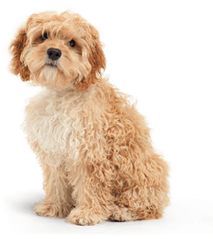Pet Photography Tips

How To Take Purrfect Pet Selfies
Everyone wants great pictures of their pets, whether it’s to show them off to your friends or to frame them for yourselves. However, pet photography can be a difficult exercise. Animals won’t always go where you want them and often look away from the camera just as you click the shutter down.
Fortunately, inspired by the launch of Apple’s iPhone 11 and its portrait mode* optimised for pets, Petplan are here to provide you with some animal photography tips. With advice from Pet Behaviourist Nick Jones, learn how to get those professional quality pictures of your pet.
Have a plan
Before you even start photographing, you should have a plan in place. Think about a concept for your photos and which shots you want. Everything you need for your shoot should be set up before your pet is involved at all.
Relax Them
A tense pet is not one that will stay still for your photos. Even if you get some shots, this tension will most likely show. Try to keep them relaxed by:
- Scheduling your session for the time of day that your pet is more docile.
- Try to issue commands calmly and not to overload your pet with too many.
- Moving slowly as sudden movements are likely to make them move too, especially if you are photographing a cat.
- Take your photogaphs in a surrounding your pet will be familiar with and feel comfortable in.
- Relaxing yourself. Animals will sense your anxiety and mirror it.
Get them used to the camera
The shutter clicks and flash can be disorienting for an animal. It is important that you start your session by familiarising your pet with these things. Pet Behaviourist Nick Jones says that starting your pet at an early age will make this much easier.
If photographing a dog, get them acquainted with the camera by allowing them to sniff it.
With any pet, point the camera away from them and photograph other objects in their presence for a while. This will demonstrate that it is not a threat. Once you can see they are comfortable with the camera, you can begin photographing them.
Get on their level
Try bringing the camera down to your pet’s eye-level, rather than shooting down at them from standing. This will enable you to frame your pet’s face better and achieve are more aesthetically-pleasing portrait.
You can even try using a long-lens in this position, which would allow you to get some great close-ups of your pet’s expressions.
Light
It is always best to photograph in natural light. Using a flash generally looks worse and has the potential to frighten your pet.
Flash should only be used when you are photographing inside and with a lack of natural light. If possible, use a flash that you can angle separately from the camera – point this upwards. This will decrease the chances of scaring your pet, as the light will be directed away from them. This also means the flash will bounce off the ceiling and become more natural-looking in the photograph.
Rewards
A long photo session can be demanding for your pet and will test their patience, so it is important that you reward them. Keep their favourite toys and snacks on hand so that you can give reinforce their positive behaviour. This will also create an association between the camera and the treats, which will make future photoshoots easier.
What not to do
Avoid dressing your pet up just for a photo. Light accessories, such as a neckerchief, may be acceptable. However, proper clothing is not meant to be worn by animals; it is uncomfortable for them and potentially harmful to their breathing.
Pet behaviourist Nick Jones advises that you should also not force them into any positions. Animals do not like this, just as you wouldn’t.
Furthermore, you often capture more natural and endearing shots by allowing them to move freely and be themselves.
Ensure your shots are safe. Good photos are not worth endangering your pet’s life, so do not photograph in places that may put them a risk.
Finally, don’t be afraid to experiment. Digital cameras mean you don’t need to worry about running out of film, so take lots of pictures, from lots of angles. This will only increase your chance of capturing a great photo to treasure.
If you have any tips on how to take great pet photos, let us know in the comments below or share your photos with us on Instagram @Petplan_uk...
Related articles:
- Do you speak woof?
- How to calm dog anxiety and stress
- Does positive reinforcement training work for cats?
- 3 ways positive reinforcement can change your pet's behaviour
- Teaching your cat new tricks
*Learn more about the Apple iPhone 11 Portrait Mode.

